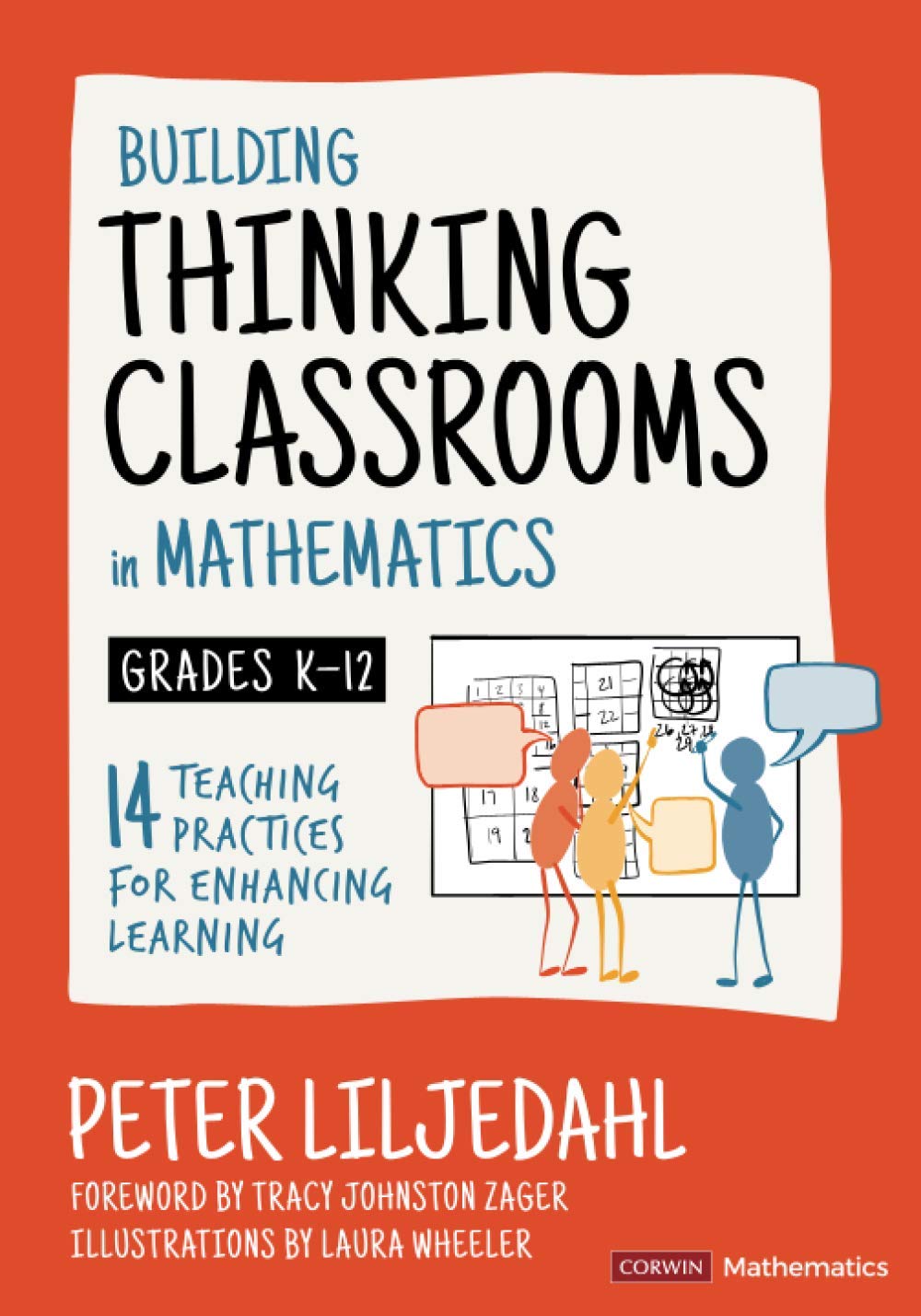The main ideas of the book:
- Unfortunately, the way we learned to teach math promotes more mimicry than thinking in our students.
- Students will think if teachers set the right expectations and give them the chance. In-classroom research has revealed the 14 most effective changes we can make to get our students to think, persevere, and ultimately learn.
Why I chose this book:
I have to confess, when I was a math teacher, I was guilty of using so many of these practices don’t get students thinking. They are the norms we’ve come to expect in math class – the teacher stands, the students sit, the teacher writes on a vertical surface while students write on horizontal ones, the teacher models how to solve the problems, and the students mimic the process. But these norms are based on the premise that students either can’t or won’t think. It’s as if we’ve given up and have designed math classrooms to support an environment where thinking is not required.
The expectation that students won’t think needs to be disrupted, and this book is the one to do it. Peter Liljedahl’s research is deeply rooted in real classrooms. He’s not going to leave you with theory about teaching in a way that is student-centered and inquiry-based. Instead, he’s identified 14 practices that teachers can start implementing in the classrooms tomorrow to get their students thinking and learning to do math for themselves.


